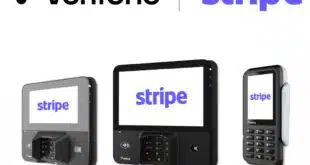The consumer-payments industry is thriving. Last year, consumers embraced more payment methods than ever, a behavior that companies like Stripe (now valued at $95 billion ahead of a highly anticipated Wall Street debut) are banking on in a post-Covid world.
In fact, a recent Deloitte report tells us that, in spite of the pandemic’s lower business activity, the U.S. consumer-payments industry has been “resilient in supporting consumers during these challenging times” with “the issuance of contactless cards, promotion of digital wallets, and installation of POS devices with contactless functionalities.” If you paid a friend with Venmo or Zelle in the last year—which you probably did—you’re part of this digital-payments trend.
Meanwhile, U.S. business-to-business payments are fundamentally broken, with around half of payments still made by paper check.

It’s no secret that checks can be costly to process and slow to arrive with increasing postal delays, and that hurts cash flow. And having a roomful of people processing checks just doesn’t align with the new, work-from-anywhere mentality. Indeed, despite their still-widespread use, checks are accounts-receivable professionals’ least-favorite payment method, according to a recent Billtrust survey.
The bottom line is that B2B organizations are hindered in realizing their full growth until they adopt solutions to accept digital payments.
Some younger Millennials and older members of Gen Z perhaps have never even written a check, so why are the B2B payments methods used by the businesses they work for so far behind the times? There are a lot of reasons in addition to good old-fashioned resistance to change. One of the biggest is that there is no easy way for a business that wants to make an electronic payment to learn how to pay another business electronically.
With no central repository of banking credentials and email addresses, businesses resort to the wildly inefficient practice of calling up their vendors and asking for their bank information. A better solution is to hire an accounts-payable partner that does this as part of its business model, though it is essentially doing the same thing, so the messy process ends up simply being shifted to someone else.
Of course, this isn’t how it works in person-to-person payments. If you want to pay someone you know electronically, you can use a service like Venmo. You don’t call the person and ask for banking information. Venmo is both a directory of people who can be paid and a money-movement tool.
So, what can B2B learn from the consumer-payments world? In a word, interoperability. Hundreds of enterprise-resource planning systems, plus thousands of banks and even more companies all investing in a variety of customer-payment portals, make B2B payments far more complex than consumer payments. That makes interoperability the key to wide use and acceptance of B2B digital payments.
In the consumer world, interoperability goes back to the late 1970s and early ‘80s, when there were dozens of ATM networks like Star, Cirrus, and Pulse. While it was great being able to pull cash out of your bank account 24/7, you were initially limited to using your own bank’s ATM or one within your network. It wasn’t until these networks joined forces that ATMs really took off. These interbank networks now play a critical part in facilitating transactions between cardholders, merchants, and banks, and they form the basis for today’s robust consumer-payments system.
As with ATM networks, B2B payments networks do exist today, automatically connecting suppliers to many of the AP portals buyers are using to pay invoices, as well as to third-party banks and ERPs. Working like a digital lockbox, a B2B payments network captures the payment instruction when an invoice is approved to pay and moves the money to the supplier based on its payment preferences. It obtains the remittance, posts it, and presents it in a format compatible with the company’s AR process. A payments network also allows suppliers to broadcast their payment preferences to AP portals, which more and more companies are using.
Although B2B payments networks exist and are growing, more integration is needed. This will bring suppliers and buyers together by connecting the financial-services ecosystem across AP providers, payment card issuers, ERPs and banks. For large businesses transacting with suppliers, including large AP providers paying on behalf of smaller organizations, payments networks will play a central role in the future of B2B payments.
—Flint Lane is the chief executive of Billtrust, Lawrenceville, N.J.





